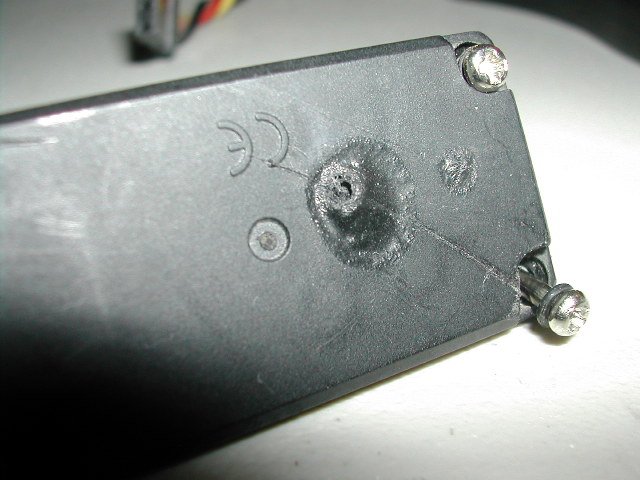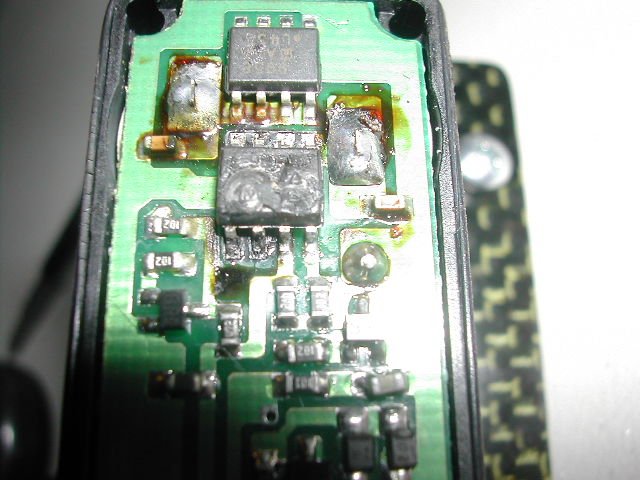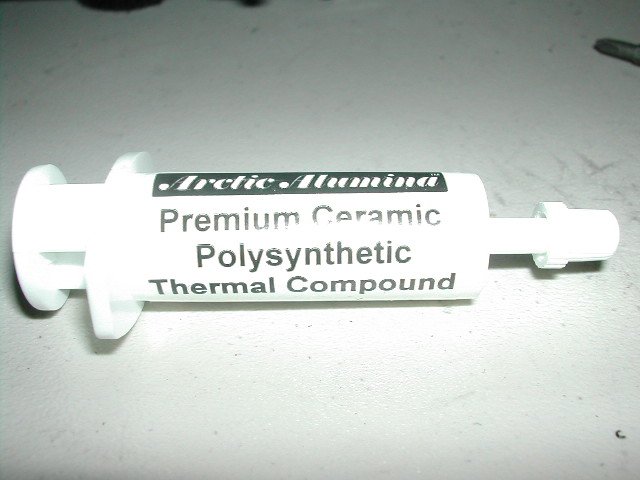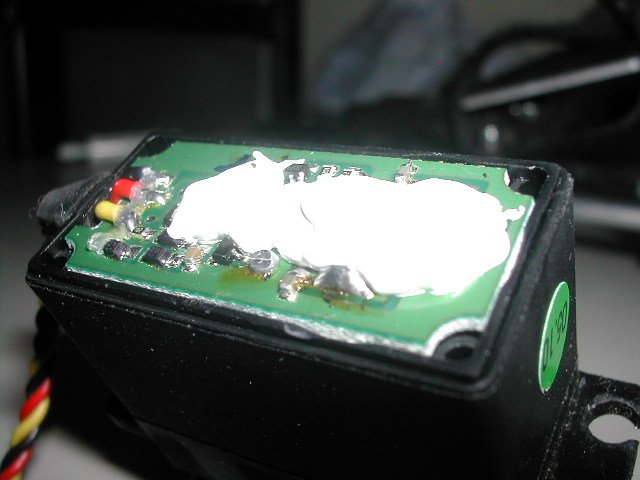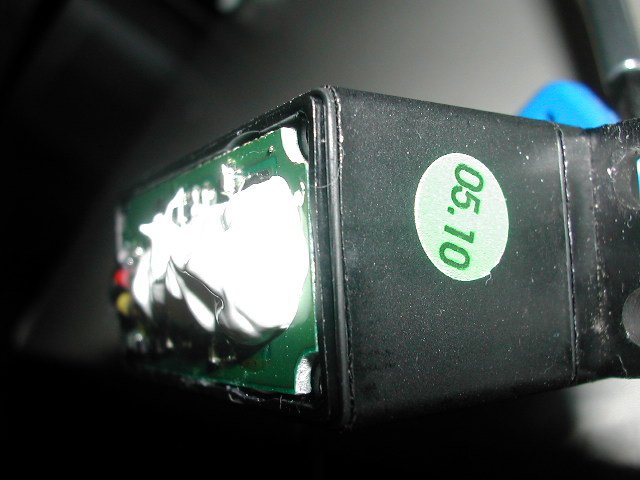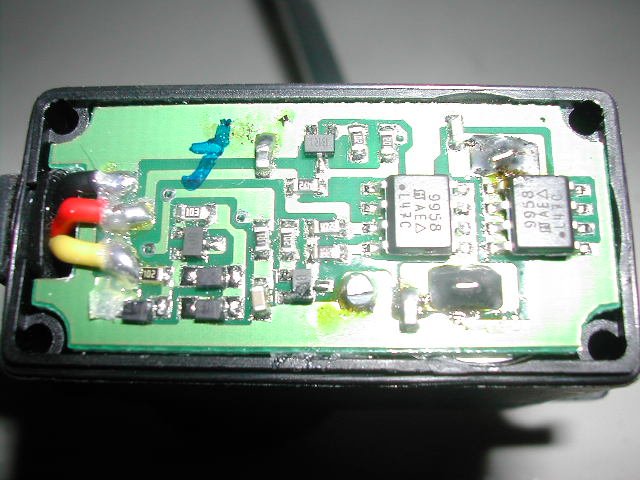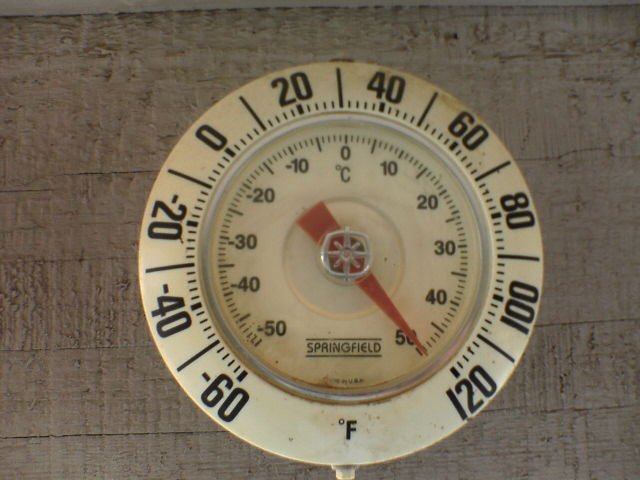kevinlongisland
The Wheels Keep Turning
I've had two 5995tg robot servos overheat and fail on me during the peak of the Arizona heat. On both occasions the servos failed when used under continuous use. What I mean by continuous use is running complete battery packs down, putting in another battery pack, and crawling again. In comparison, my robot servos lasted for over a year when only being used for competition. During competition I only run about 1/2 a battery pack down, then the truck sits for at least 15 minutes or more.
There may have been more than one failure mode on the servo, but from the pictures you can see an obvious failure point. The semiconductor device on the open face of the board failed. After replacing the servo I noticed the new servo got very hot around this area. This semiconductor does not have a good path for heat to conduct away.
After analyzing the problem I came up with the following solution. An electrically non-conductive thermal transfer compound would help draw heat away from the semiconductor device and into it's surrounding components and the case (and into the atmosphere). You can purchase thermal transfer compound from most electronic outlets. This compound is often used on computer CPU's to help transfer heat. I've tested this with good results, although further testing is needed.
The first two photos show a servo that has failed. The following photos show my application of the thermal transfer compound. Put enough thermal transfer compound on the board to contact the back cover when you re-install it. That's it. The compound will help transfer heat away from this critical component and hopefully stop your servo from failing.
There may have been more than one failure mode on the servo, but from the pictures you can see an obvious failure point. The semiconductor device on the open face of the board failed. After replacing the servo I noticed the new servo got very hot around this area. This semiconductor does not have a good path for heat to conduct away.
After analyzing the problem I came up with the following solution. An electrically non-conductive thermal transfer compound would help draw heat away from the semiconductor device and into it's surrounding components and the case (and into the atmosphere). You can purchase thermal transfer compound from most electronic outlets. This compound is often used on computer CPU's to help transfer heat. I've tested this with good results, although further testing is needed.
The first two photos show a servo that has failed. The following photos show my application of the thermal transfer compound. Put enough thermal transfer compound on the board to contact the back cover when you re-install it. That's it. The compound will help transfer heat away from this critical component and hopefully stop your servo from failing.
Attachments
Last edited:

